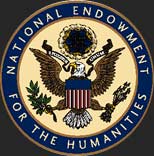Biographies
Henry Knox
25 July 1750 - 25 October 1806
 Henry Knox was born in Boston in 1750. His father died when Knox was young, so he left school for a clerk's job to support his mother. Knox educated himself and developed an interest in the military, leading him to enlist in the Boston Grenadier Corps in 1772. In 1775, Knox met George Washington at the Battle of Bunker Hill, and suggested using cannons to ward off British forces at the coast. Washington agreed, sending Knox to retrieve cannons at Ford Ticonderoga. His journey took over 50 days and involved crossing the Hudson River with 60 tons of cannon. In December 1776, Knox was promoted to Brigadier General after directing Washington and his troops across the Delaware. In 1782, Knox was made Major General of the Continental forces and then Commander-in-Chief in 1783. After serving as Secretary of War, Knox retired in 1794 to raise his family. He died on 25 October 1806 in Thomaston, Maine.
Henry Knox was born in Boston in 1750. His father died when Knox was young, so he left school for a clerk's job to support his mother. Knox educated himself and developed an interest in the military, leading him to enlist in the Boston Grenadier Corps in 1772. In 1775, Knox met George Washington at the Battle of Bunker Hill, and suggested using cannons to ward off British forces at the coast. Washington agreed, sending Knox to retrieve cannons at Ford Ticonderoga. His journey took over 50 days and involved crossing the Hudson River with 60 tons of cannon. In December 1776, Knox was promoted to Brigadier General after directing Washington and his troops across the Delaware. In 1782, Knox was made Major General of the Continental forces and then Commander-in-Chief in 1783. After serving as Secretary of War, Knox retired in 1794 to raise his family. He died on 25 October 1806 in Thomaston, Maine.



